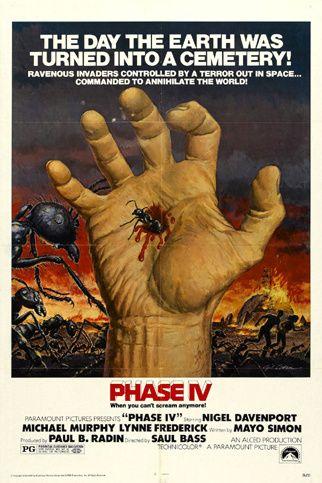Talking about science fiction movies is talking about the history of cinema in general. We already find examples of the genre in the early days of the cinematograph: not only Méliès's famous Voyage to the Moon (1902), a pioneering and visionary work where they exist, but also the work of Spanish geniuses such as Segundo de Chomón, whose The Electric Hotel (1905), a miracle of primitive stop motion, was essential for the development of a national animated film. Even Edison sponsored an adaptation of Frankenstein in 1910, the first of all that would arrive in the following decades. If the new invention was already looking at the works that laid the foundations of the genre in literature, that meant that the cinema/science-fiction marriage was destined to last.
It is possible that Germany was the country where the honeymoon was celebrated: the silent serial Homunculus (1916), The Golem (1920), The Hands of Orlac (1925), Metropolis (1927) or The Woman in the Moon (1929) they propelled the genre on screen as American magazines like Amazing Stories did it in the pop culture imaginary. From a more avant-garde perspective, Russia surprised the world with Aelita (1924) and even French surrealism approached what we can understand by CF in Sleeping Paris or Ballet mécanique, both from 1924. All you have to do is recover A fantasy of the future (1930) or The Future Life (1936) to discover that the world between the wars dreamed of splendid futures and marvels of technology, although sometimes (as in Metropolis) the price to pay was our dehumanization.
After surviving as best they could during the 1940s, mainly on the basis of superhero serials and Universal sequels to the Invisible Man or Frankenstein, science-fiction movies re-emerged with atomic force in the 1950s: invasions of flying saucers, giant radioactive monsters and incredible humans. waning/growing moved the capital of the genre to the United States, where it has remained to date, although Japan also knew how to sublimate its post-war anxieties through the figure of Godzilla. In the 1960s, CF jumped onto television with The Twilight Zone (1959-1964) or Star Trek (1966-1969), but that didn't mean it left the cinema: classics like La Jetée (1962), Barbarella, Planet of the Apes or 2001: A Space Odyssey, the last three from 1968, belong to this decade. It is likely that Stanley Kubrick remains, even today, the most ambitious science fiction movie ever shot, which was always the intention of its author.

In the seventies, SF became politically aware, with Mysterious Ships (1972), When Fate Overtakes Us (1973), Rollerball (1975) or Stalker (1979) as great examples of how far the genre can go if we understand it as a parable Social. However, that does not mean that the taste for pure entertainment was lost, as shown by George Lucas who, between THX 1138 (1971) and Star Wars (1977), went from the Orwellian fable to the most sincere tribute to the serials I watched as a child. The same year as Star Wars, Steven Spielberg premiered his symphonic Encounters in the third phase, where aliens were seen as benevolent beings, but the non-aggression pact was rather short-lived: Alien (1979) once again taught us to mistrust in every way of life alien to this rock called Earth.
The eighties were a decade of sequels, blockbusters and franchises, but also of rarities as mythical as Blade Runner (1981) or as vindicatable as Repo Man (1984). John Carpenter carried the flame of social criticism with They Are Alive (1988), but he also rescued fifties paranoia with the extraordinary The Thing (1984). It was a time of icons: the Terminator, RoboCop, Tron, Marty McFly, the sandworms of Dune (1984)... Which is not to say that the nineties and two thousand generated fewer images for posterity, as practically any shot of Matrix (1999). The postmodern era left us gems like Total Challenge (1990), Mars Attacks! (1996), Minority Report (2002), Serenity (2005) or Cloverfield (2008), the first great CF film shot with a handheld camera. Origin (2010) and Tenet (2020), both by Christopher Nolan, opened and closed a whole decade of wonders that, probably, we have not yet been able to fully assimilate, although it is clear that Gravity (2013) or Mars (2015) would be two of its indisputable high points.
And what about the future? Well, not even the best sci-fi movies have been able to preview it without some margin of error, so who knows. Hopefully it will be less Idiocracy (2006) than we fear, yes. But surely there will be CF cinema as imaginative, vibrant and essential as in the previous hundred years.
Without mining or Portezuelo, a company that produces wine is born in Malargüe
Goodbye to Carlos Marín: this is the heritage and fortune left by the singer of Il Divo
Record of women affiliated with Social Security, but temporary and with low salaries
Ceviche to Recoleta and croissants for officials: the bet of the workers of Villa 31 to sell outside the neighborhood